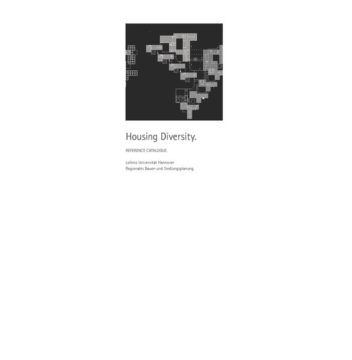“Housing Diversity” is the necessary continuation of a series initiated with “Low Rise High Density”. The series aims at the construction of a systematic analytical and research background on urban and architectural patterns that, differently from other collections focusing on one particular angle, proposes to study the interface between these two scales as main opportunity to discover potential innovative aspects. At the same time the specificity of “Housing Diversity” is to provide a collection of quite different examples, that, ranging from Europe to the Far East, go through different scales, programmes, architectures and are the expression of diverse times, from the ‘30s up to today. The recent Sejima’s Town Houses project in Tokyo, is an example of patio houses, where public-private spaces play a crucial role for community building. The Orphanage in Amsterdam, one of the masterpieces of Aldo van Eyck built at the end of the ‘60s, shows quite clearly how a special architecture and building structure can get in dialogue with the surrounding environment and how this can contribute to create an atmosphere of openness and security at the same time. The Hillside Terrace by Fumihiko Maki in Tokyo displays an interesting example of mix-use development, gathering commercial activities inside a basic platform that supports the residential units. The Atelier 5’s Sieldung Flamatt in Switzerland is a very nice mix of housing types, where private-public spaces are crucial in defining the community atmosphere, through pathways and bridges connecting the volumes and providing special solutions for the private accessibility to the apartments.
- Veröffentlicht am Donnerstag 1. Juni 2017 von Leibniz Universität Hannover Regionales Bauen + Siedlungsplanung
- ISBN: 9783946296164
- 30 Seiten
- Genre: Architektur, Kunst, Literatur, Sachbücher
